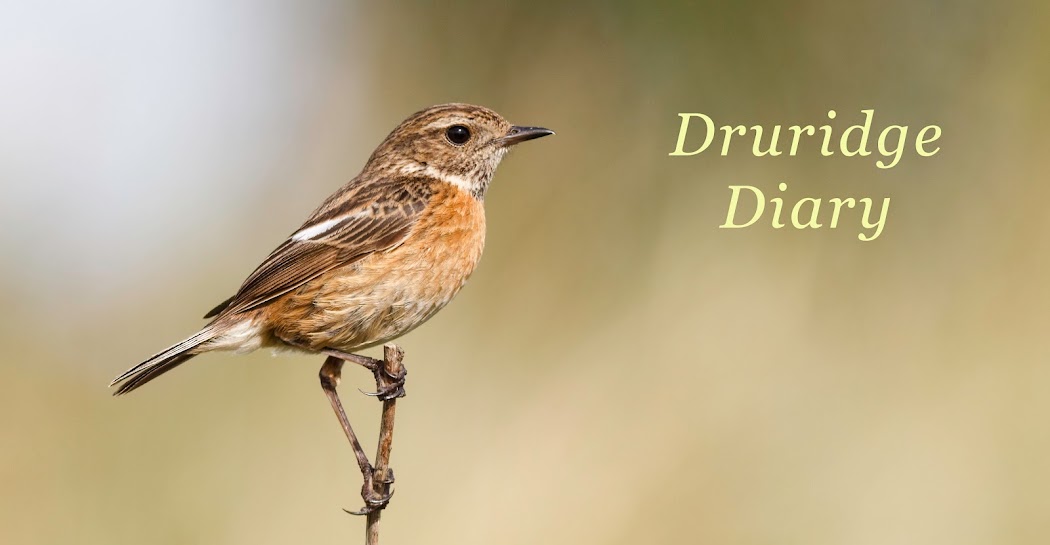It wasn't a mega by any means, but it wasn't without some highlights. One bird could've made all the difference, I just couldn't find it despite spending the best part of eight hours on the patch.
Janet joined me and we started at the Plantation and worked our way north, checking all suitable habitat. The male Blackcap that has been guarding his patch of elderberries by the entrance was joined by two or three more - we saw at least nine Blackcaps this morning so a small arrival.
 |
| Young male Blackcap guarding his Elderberries |
Other than a few Goldcrests, Redwings and flyover Skylarks, things were quiet until we reached the patch to the hides and heard a Yellow-browed Warbler calling, it flitted about in the willows and Whitebeam, showing well for a Yellow-brow. It was nice for Welsh Joe to get some pics as he's been complaining he hasn't managed to photograph one well - they are so tricky. Whilst we watched this bird a second Yellow-browed called beyond it and then a real patch Mega showed briefly - Treecreeper! Not even a year tick after the one in the plantation earlier this month.
 |
| Yellow-browed Warbler with a caterpillar |
 |
| Same Yellow-brow, side-on. They don't normally stay still long enough for photos like this |
 |
| Look, I'm not an Eastern-crowned Warbler |
By the bridge, it was sheltered and a couple of Speckled Wood butterflies were on the wing and this stunning Comma sunned itself.
 |
| A common autumn butterfly nowadays - Speckled Wood |
We wandered north. Up at the turning circle, in the Blackthorn thicket, we had at least three Chiffchaffs and another Yellow-browed Warbler. We also saw another Phylloscopus warbler briefly that remains unidentified. Five Pochards were on the big pool which are notable as they are increasingly scarce species at Druridge.
 |
| Patch scarcities - five Pochard on the big pool |
 |
| Hunting Kestrel |
After lunch, I headed back to look for the mystery phylosc but with no luck. A flock of Long-tailed Tits came through, which we hadn't seen in the morning, with a Yellow-brow in tow. In the dunes to the north, the finch/bunting flock was restless, when they did land, there was at least five Twite with them, my first of the Autumn as well as 30+ Lesser Redpolls and handful of Tree Sparrows, Goldcrests and other finches, otherwise they were mostly Linnets. Over 30 Reed Buntings fed independently of the flock.
 |
| One of over 30 Reed Buntings in the weedy dunes - ISO3200 so it's turned out bad! |
At 4.30 I gave up and tried a seawatch. It started quietly and then it pissed-it-down. I stuck it out for an hour seeing very little. Two Goldeneye with a Slavonian Grebe on the sea were noteworthy.
Cold and wet I headed home after over eight hours on the patch and 65 species.
I'll be back tomorrow.


No comments:
Post a Comment